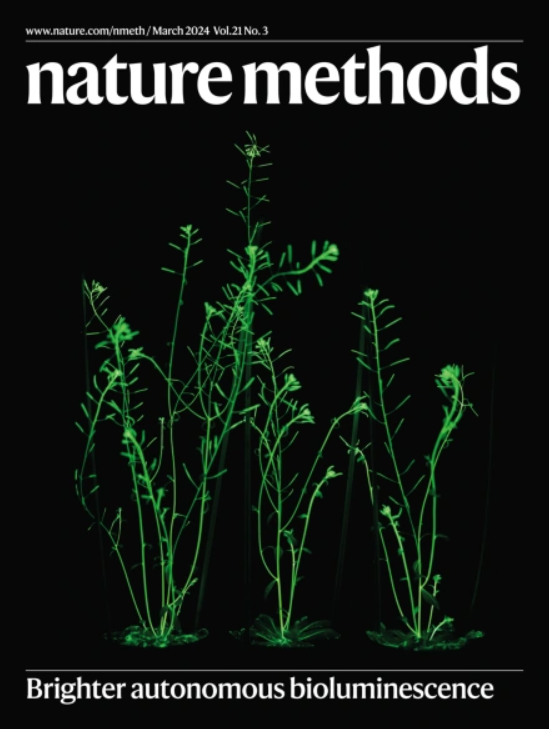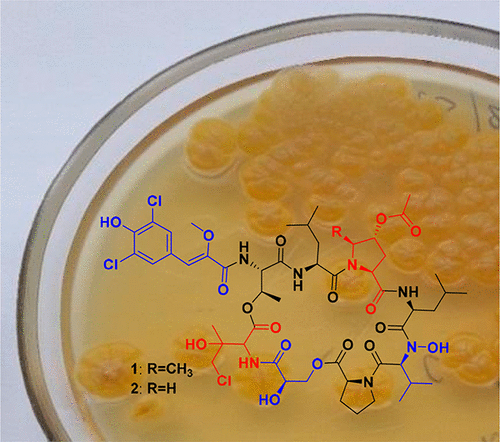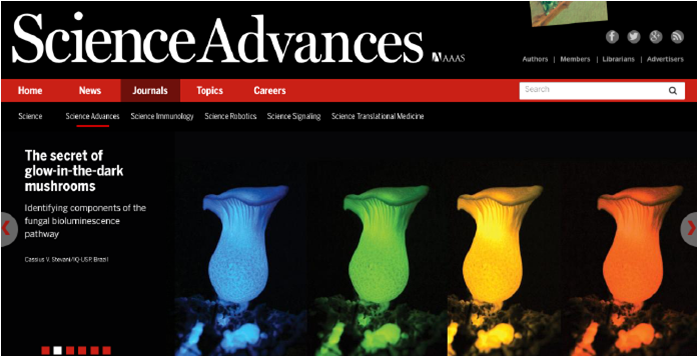Four new articles on bioluminescent topics have been published since the beginning of 2024: a review about the study of bioluminescence of fungi in a prestigious Journal of Photochemistry and Photobiology C: Photochemistry Reviews, two milestone articles about the use of fungal autonomic bioluminescence system, including in eukaryotic organisms, in Nature Methods and Science Advances and a fresh update about the study of bioluminescence mechanism of Henlea earthworm in BBRC.
Further insights into the chemistry of Henlea sp. bioluminescence
The bioluminescence of Henlea sp. earthworms is enhanced by low-molecular weight cofactors termed ActH and ActS. The compounds were purified from earthworm extracts and investigated by NMR and HRMS. ActH was identified as cofactor F0, ActS turned out as sulfated ActH. The project is performed in colllaboration with Institute of Biophysics, Krasnoyarsk Research Center, Pirogov Russian National Research Medical University and Moscow Institute of Physics and Technology. Further details could be found on Org Biomol Chem website.
New depsipeptide antibiotics from marine Streptomyces sp. KMM 9044
Picture from https://pubs.acs.org/doi/10.1021/acs.orglett.2c01714
Two new unusual depsiheptapeptides streptocinnamides were isolated from the bacterium Streptomyces sp. KMM 9044 collected in the northwestern part of the Sea of Japan. The structures of isolated compounds were identified by NMR and MS studies and confirmed by chemical transformations. One of the isolated compounds, streptocinnamide A is a potential selective inhibitor of a series of Gram-positive bacteria. The project was performed in collaboration with G. B. Elyakov Pacific Institute of Bioorganic Chemistry, Pirogov Russian National Research Medical University, Moscow Institute of Physics and Technology and Federal Research and Clinical Centre of Physical-Chemical Medicine of Federal Medical Biological Agency. Further information could be found on OrgLett website.
Mechanism of coelenterazine chromophore photoinactivation from Beroe abissycola photoprotein is proposed
New paper in Organic Letters made in collaboration with Photobiology Lab from Institute of Biophysics SB RAS (Krasnoyarsk, Russia) describes the elucidation of the mechanism of Beroe abyssicola photoprotein photoinactivation. See here.
Sustainable Light Achieved in Living Plants
We are happy to announce that new paper about autoluminescent plants was published this week in Nature Biotechnology as a result of collaboration between Yampolsky lab and Institute of Bioorganic Chemistry RAS, Planta, MRC London Institute of Medical Sciences, and the Institute of Science and Technology Austria.
The research of fungal bioluminescent system revealed that its bioluminescence is metabolically similar to the natural processes common among plants. By inserting DNA obtained from the mushroom, we were able to create plants that glow much brighter than previously possible.
This biological light can be used by scientists for observing the inner workings of plants or for practical and aesthetic purposes, most notably for creating glowing flowers and other ornamental plants. Please refer to the original paper to learn more.
The work was highlighted in Nature Plants, Nature Methods, CNN, Guardian, The Times, Science etc.
Paper about Odontosyllis luciferin in PNAS
This was a tough one to crack! Only 3 signals in proton NMR spectrum, and, thanks to X-ray, we could see more. But now we finally know how exactly these polychaeta worms glow to mate each other. Check out our new paper about Odontosyllis luciferin on PNAS website.
Figure from PNAS website. O. undecimdonta worms and components of its bioluminescence system. (A) The fireworm in daylight and in the dark. (B) Light emission of lyophilized worms in water. (C) NMR tube with the purified oxyluciferin (Green), visible light. (D) Fluorescence of Green, UV light. (E) NMR tube with the purified product of nonenzymatic oxidation of luciferin (Pink), visible light.
Our paper about fungal bioluminescent system is out!
After more than five years of a very collaborative research, we are glad to announce the main components of fungal bioluminescent system.
Many thanks to everyone who contributed to this study. This is definitely one of our most interesting projects so far – and it’s not over! 😉
Check out our paper on PNAS website
© Sergey Shakhov
New in fungal bioluminescence: oxyluciferin, reaction mechanism and further prospects
New paper about the mechanism of bioluminescence in fungi was published online in Science Advances journal today!
Our review about new bioluminescent systems was published in Accounts of Chemical Research
Read the paper here.
The structure of fungal luciferin is finally discovered!
Read our paper about the chemical basis of fungal bioluminescence on Angewandte Chemie website













